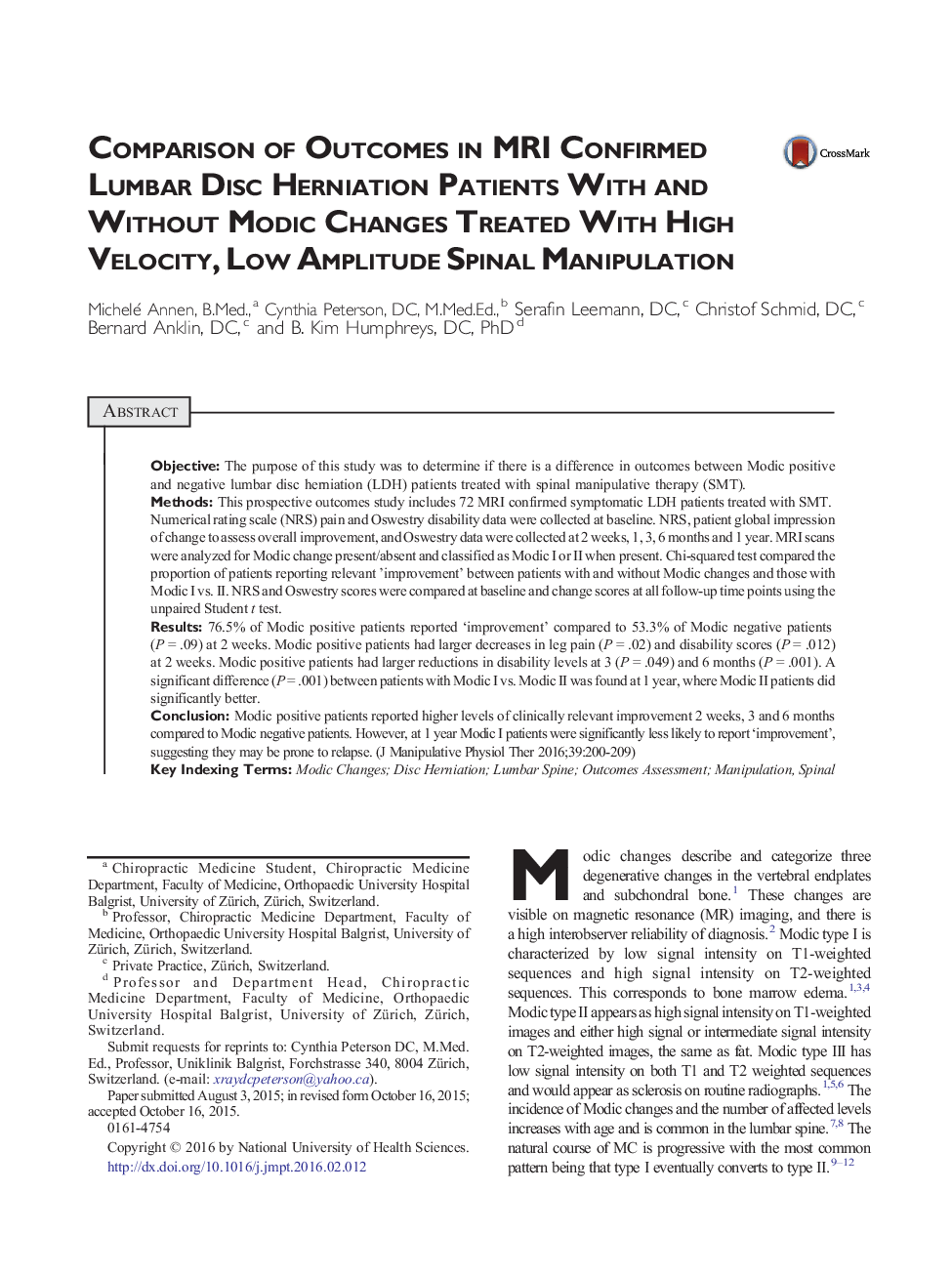| Article ID | Journal | Published Year | Pages | File Type |
|---|---|---|---|---|
| 5863822 | Journal of Manipulative and Physiological Therapeutics | 2016 | 10 Pages |
ObjectiveThe purpose of this study was to determine if there is a difference in outcomes between Modic positive and negative lumbar disc herniation (LDH) patients treated with spinal manipulative therapy (SMT).MethodsThis prospective outcomes study includes 72 MRI confirmed symptomatic LDH patients treated with SMT. Numerical rating scale (NRS) pain and Oswestry disability data were collected at baseline. NRS, patient global impression of change to assess overall improvement, and Oswestry data were collected at 2 weeks, 1, 3, 6 months and 1 year. MRI scans were analyzed for Modic change present/absent and classified as Modic I or II when present. Chi-squared test compared the proportion of patients reporting relevant 'improvement' between patients with and without Modic changes and those with Modic I vs. II. NRS and Oswestry scores were compared at baseline and change scores at all follow-up time points using the unpaired Student t test.Results76.5% of Modic positive patients reported 'improvement' compared to 53.3% of Modic negative patients (P = .09) at 2 weeks. Modic positive patients had larger decreases in leg pain (P = .02) and disability scores (P = .012) at 2 weeks. Modic positive patients had larger reductions in disability levels at 3 (P = .049) and 6 months (P = .001). A significant difference (P = .001) between patients with Modic I vs. Modic II was found at 1 year, where Modic II patients did significantly better.ConclusionModic positive patients reported higher levels of clinically relevant improvement 2 weeks, 3 and 6 months compared to Modic negative patients. However, at 1 year Modic I patients were significantly less likely to report 'improvement', suggesting they may be prone to relapse.
